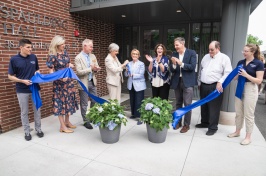UNH Research Finds Rural Population Decline Really Means Success for Some, But Not All

DURHAM, N.H.—All of the growth in the share of the population that lives in metropolitan counties is due to rural counties transforming into metropolitan ones, according to new research released by the Carsey School of Public Policy at the University of New Hampshire. Since 1970, 25% of counties containing 22% of the current U.S. population have been reclassified from rural to urban as a result of population and economic growth.
“The ongoing ‘metropolitanization’ of America through reclassification is a demographic paradox that is not appreciated by policymakers, the media or researchers,” said the researchers. “This transfer of population and territory through reclassification calls into question the commonplace narrative of urban growth and rural decline occurring through an emptying out of rural America. The common narrative of dying rural areas turns out to be a story of rural success as much as anything.”
The researchers also noted that while for urbanizing rural areas the demographic future might look bright, “there is less hope for the many remoted, thinly populated and declining areas ‘left behind’ in rural America where the prospects for future population gain and development seem even more limited than ever.”
The research was conducted by Kenneth Johnson, professor of sociology and senior demographer, and Daniel Lichter, senior Carsey fellow and professor of policy analysis and management and sociology at Cornell University.
The Carsey School of Public Policy is nationally recognized for research, policy education and bringing people together for thoughtful dialogue to address important societal challenges. The school develops and facilitates innovative, responsive and equitable solutions at all levels of government and in the for-profit and nonprofit sectors. Johnson’s work was supported by his Andrew Carnegie fellowship and the New Hampshire Agricultural Experiment Station in support of Hatch Multi-State Regional Project W-4001. This research is based on Johnson and Lichter’s peer reviewed article in Demography.
The University of New Hampshire inspires innovation and transforms lives in our state, nation and world. More than 16,000 students from all 50 states and 71 countries engage with an award-winning faculty in top-ranked programs in business, engineering, law, health and human services, liberal arts and the sciences across more than 200 programs of study. As one of the nation’s highest-performing research universities, UNH partners with NASA, NOAA, NSF and NIH, and receives more than $110 million in competitive external funding every year to further explore and define the frontiers of land, sea and space.
Latest News
-
June 25, 2025
-
June 16, 2025
-
June 6, 2025
-
May 15, 2025
-
May 14, 2025
















































